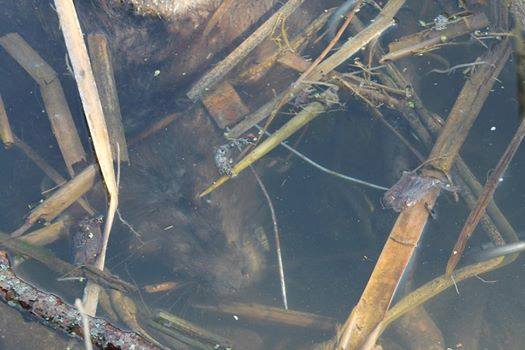After spending over 3 years as a trail volunteer for Lee Metcalf Wildlife refuge in Stevensville Montana, a dedicated volunteer quit as a result of finding a beaver crushed, drowned, intentionally from a conibear trap. When she asked the staff what was going on they said these were planned trappings for night to kill beavers for the waters for ducks. The legal trapping of beaver ended in this district 7 days before this beaver was trapped. What can we say of Montana, a dry arid state, with increasing temperatures and decreasing precipitation, with shrinking wetlands impacting rare and endangered species, reduced water resources impacting big game browse, agriculture, irrigation, fisheries and natural fire breaks, where perhaps the most critically necessary species able to create and rectify these dwindling resources……….is not permitted to live out their vital role in the ecosystem and instead of finding safe haven is purposefully trapped and killed at our wildlife refuge, contradictory to the design and vitality of the Lee Metcalf National Wildlife Refuge in the first place. “Designated in 1964, the Lee Metcalf National Wildlife Refuge was created to provide habitats for migratory birds. The 2,800 acres of lush riparian and wetland habitats attract a variety of wildlife. About 250 species of birds, 37 species of mammals, and 17 species of reptiles and amphibians have been documented on the Refuge.” http://visitmt.com/listing/categories_NET/MoreInfo.aspx… To add insult to injury, to proclaim trapping beaver on the refuge was to benefit ducks? Beaver help waterfowl by creating increased areas of water, and in northerly latitudes they thaw areas of open water, allowing an earlier nesting season. In a study of Wyoming streams and rivers, watercourses with beaver had 75-fold more ducks than those without. Trumpeter swans and Canada geese often depend on beaver lodges as nesting sites.[ Canada’s small trumpeter swan population was observed not to nest on large lakes, preferring instead to nest on the smaller lakes and ponds associated with beaver activity. WikipediaNorth American Beaver Beaver may benefit the birds frequenting their ponds in several additional ways. Removal of some pondside trees by beavers would increase the density and height of the grass–forb–shrub layer, which enhances waterfowl nesting cover adjacent to ponds. Both forest gaps where trees had been felled by beaver and a “gradual edge” described as a complex transition from pond to forest with intermixed grasses, forbs, saplings, and shrubs are strongly associated with greater migratory bird species richness and abundance. Coppicing of waterside willows and cottonwoods by beavers leads to dense shoot production which provides important cover for birds and the insects they feed on. Widening of the riparian terrace alongside streams is associated with beaver dams and has been shown to increase riparian bird abundance and diversity, an impact that may be especially important in semi-arid climates. WikipediaNorth American Beaver As trees are drowned by rising beaver impoundments they become ideal nesting sites for woodpeckers, who carve cavities that attract many other bird species including flycatchers, tree swallows, tits, wood ducks, goldeneyes, mergansers, owls and American kestrels. Piscivores, including herons , grebes, cormorants, American bitterns, great egret , snowy egret, mergansers and belted kingfishers, utilize beaver ponds for fishing. Hooded mergansers, green heron, great blue heron and belted kingfisher occurred more frequently in New York wetlands where beaver were active than at sites with no beaver activity. WikipediaNorth American Beaver According to FWP, in the last 6 recorded years, almost 40,000 beaver have been reported trapped and killed in Montana. Beaver can be trapped in unlimited numbers throughout much of the year and DO NOT need to be REPORTED. “Beavers are a keystone species – that is, their presence and activities are so important to an ecosystem that their removal leads to a loss of habitat for other species and a breakdown of ecological integrity.” –Dave Foreman, Rewilding North America, 2004 Need any more reasons to support our initiative? Please help spread the word! Getting our initiative on the ballot and successful passage of it will help protect beavers and other species on Montana public lands and refuges!
